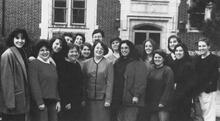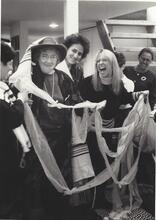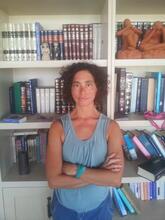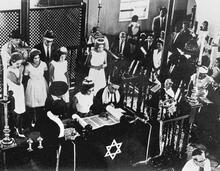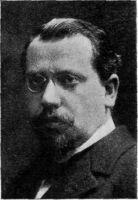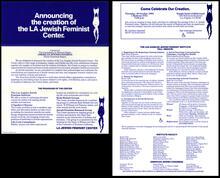Leaders in Israel's Religious Communities
Since the late twentieth century, women have begun to assume leadership positions that are undoubtedly “religious” in both content and form. In Israel, this phenomenon is expressed differently in the Jewish denominations. In the liberal Reform and Conservative movements, gender equality has existed for decades, while the most traditional ultra-Orthodox societies strictly preserve traditional gender roles and distinctive female religious leadership exists only within halakhic constraints. In the middle is modern Orthodoxy, in which measured changes have taken place that led to significant changes over the years and created a new generation of religious leadership.
Introduction
Since the late twentieth century, Jewish women in Israel have begun to assume leadership positions that are undoubtedly “religious” in both content and form. Religious leaders, like any other leaders, guide their followers towards achieving goals and purposes, and they can do so by influencing their followers’ motivation. They derive their authority from the strength of their own religious characteristics. What therefore distinguishes them from secular leaders is that, even in democratic societies, their authority emanates not solely from the public, but also from a religious source—in the case of Judaism, the Torah she-bi-khetav: Lit. "the written Torah." The Bible; the Pentateuch; Tanakh (the Pentateuch, Prophets and Hagiographia)Torah, as articulated by the existing power structure of rabbis and scholars. Hence, a crucial criterion for religious leadership in the world of Jewry is “knowledge of the Torah,” by which is meant the ability to refer to the canonical texts in an unmediated manner. Thus, in traditional Judaism the leadership of a rabbi gains authenticity and finds expression in that the individual is both a Halachic decisorposek (decisor) in matters of Jewish law (The legal corpus of Jewish laws and observances as prescribed in the Torah and interpreted by rabbinic authorities, beginning with those of the Mishnah and Talmud.halakhah) and a spiritual-educational mentor.
The rise of the internet has brought with it increasing access to knowledge. At the same time, religious education in Israel has expanded due to greater numbers of schools for men and women called Yeshivot Hesder (yeshivas that combine IDF military service and Torah study) and pre-army Mechinot (Pre-Military Leadership Academies) for men and Midrashot (Torah seminars) for women. These two developments have had the unintended consequence of weakening the need for rabbis as a source of halakhic knowledge. The rabbis' place as spiritual-educational leaders, however, has increased.
This shift contributed to the emergence of new forms of female religious leadership. Two stages of female religious leadership can be discerned in Israel, one that began in the last decades of the twentieth century and another that started around 2006 and continues into the present. The first stage was primarily focused on halakhic authority, while the second stage has expanded to include intellectual, public leadership, and activist elements as well. In Israel, women religious leaders do indeed derive their authority from attainment of the traditional virtues of piety and Torah erudition. They also wield considerable moral and spiritual influence within the communities that acknowledge their leadership.
Today, in Israeli Modern Orthodox circles (Dati-leumi), women religious leaders sometimes differ from male religious leaders in the topics about which lay people request their opinions: In some communities, women assume the authority to deliver a Halachic decision; rabbinic ruling on the halakhah in a specific case, e.g., regarding the permissibility of an act.pesak (decision in halakhah) in family purity (Menstruation; the menstruant woman; ritual status of the menstruant woman.niddah) and bereavement (avelut), while male leaders are not limited to particular issues. Also, their followers often consist solely of women rather than of mixed-gender communities.
Numerous forms of women’s religious leadership have emerged in different Jewish religious societies in Israel. Women’s religious leadership is most often aimed at those circles that define themselves as in some way “religious,” but women religious leaders also have an audience in non-religious circles.
The following discussion includes three important clusters, each of which expresses a different attitude towards the status of women and each of which, consequently, allows for varying possibilities of women’s religious leadership. The Reform and Conservative movements espouse full equality for women and, for this reason, equality in religious leadership. The other end of the spectrum is occupied by the Haredim (Ultra-Orthodox), who reject the ideology of women’s equality and the possibility of women’s integration into halakhic leadership. However, changes in the status of Haredi women have allowed for the presence of spiritual-educational leaders. The middle ground is occupied by the Modern-Orthodox, whose members partially accept and partially reject the premises of the other two groupings. In Modern-Orthodoxy, therefore, a unique synthesis has emerged.
In this entry, we use the term Modern Orthodoxy as a general definition for the non-Haredi Orthodox public in Israel. It is a social-religious definition that is not political. It refers to a spectrum in which at the right end are the nationalists-ultra-Orthodox, and at the left end, the liberal Modern-Orthodox.
Reform and Conservative Movements
Unlike in Orthodox circles, Reform and Conservative congregations and leadership do not consider women’s religious leadership to constitute a religious problem. Due to their acceptance of the principle of gender equality in rights and obligations, the Reform Movement opposes the part of halakhah that bars women from leadership positions. Thus, in Israel and the United States, women rabbis are ordained by Hebrew Union College and serve as congregational rabbis. Over the years, women have embraced additional leadership positions such as Chief of the Rabbinical Court Rabbi Galia Sadan (b. 1967); Dean of Hebrew Union College in Jerusalem Rabbi Naamah Kelman-Ezrachi (b. 1955); Director of the Israeli Rabbinate Program Rabbi Talia Avnon-Benveniste; and Coordinator of the Reform Rabbinical Council Rabbi Chen Ben Or Tsfoni (b. 1963).
The Conservative Movement made slower progress toward the ordination of women rabbis because of its commitment to halakhah. In the United States the Jewish Theological Seminary began ordaining women in 1983 and in Israel the Schechter Institute of Jewish Studies began ordaining women in 1992. Since then, women’s ordination has entitled them to serve as Rabbis in all accepted capacities, including congregational rabbis and pesikah. Indeed, two women, Gilah Dror (b. 1950) and Eynat Ramon (b. 1959) have been members of the Conservative Va’ad Halakhah (Halakhic Council). Women also hold religious teaching and leadership positions in the Schechter Institute. Some of these women include Rabbi Tamar Elad Appelbaum, Rabbi Diana Villa, and the current Dean, Rabbi Tamar Kadari. Similarly, half of the teaching staff at the Jerusalem Conservative Yeshiva are women. Also, the Movement’s Chair (2020) is a woman, Sophie Palman Replovitz, and a number of women serve in educational and formal positions on the movement’s committee and staff.
In both movements, the number of women qualifying for ordination is generally equal to that of men. In the Reform movement 24 women and 22 men serve as congregational rabbis in Israel. In the Conservative Movement, though, fewer women actually serve as congregational rabbis than men. Out of 25 permanent Conservative congregations in Israel (2020), there are only nine female rabbis, compared to seventeen male rabbis (one congregation is co-led by both genders). However, in recent years fewer Conservative congregations are employing a rabbi of any gender. Instead, the members themselves carry out the ritual and educational functions, and women have become prominent in the role of “lay rabbi” and Gabaiyot (synagogue officers). In this informal way, they are fully religious leaders.
Women also play a leadership role through the Reform Movement's Facebook group “Bnot Dina” ("the daughters of Dina"), advocating against sexual violence.
The Haredi World
The stated ideal in Haredi society is the maintenance of traditional limits as bulwarks against the threat posed by modern secular society. Hence, Haredi society altogether suspects and rejects non-material Western ideologies, feminism included. Indeed, it perceives feminism as a synonym for a range of evils that encompasses permissiveness, destruction of family life, and abandonment of Judaism.
Such a context ensures that women’s secondary place on the socio-religious ladder is strictly preserved, reserving the apex of the social and religious hierarchy for men. Women help men to fulfill their role as scholars by taking on the dual function of homemaker and breadwinner and thereby releasing men from most domestic chores. The role of breadwinner, usually done by women in a growing variety of professions, is considered secondary in importance and an auxiliary to the male imperative, which is Torah study.
The extent to which women are thus allocated a secondary religious role has direct implications for the possibility of the emergence of women’s religious leadership in Haredi circles. Although several prominent women teachers have acquired a status that might be considered one of religious leadership, they themselves limit their role to teaching, stressing their secondary status by always referring to a male rabbi as a source of authority. Significantly, the Haredi world adamantly excludes women from studying what it considers to be the most substantive body of Torah knowledge: Codification of basic Jewish Oral Law; edited and arranged by R. Judah ha-Nasi c. 200 C.E.Mishnah, Lit. "teaching," "study," or "learning." A compilation of the commentary and discussions of the amora'im on the Mishnah. When not specified, "Talmud" refers to the Babylonian Talmud.Talmud, and canonical halakhic texts such as the Moses ben Maimon (Rambam), b. Spain, 1138Rambam and Lit. "the prepared table." A code of Jewish Law compiled by Joseph Caro (1488Shulhan Arukh. Their exclusion from the study of these sources prevents women from advancing to positions at the apex of the Haredi intellectual-religious pyramid and from access to the sphere of pesikah, which is an integral part of the rabbi’s religious leadership role. Haredi women accept this situation as a norm. As is common in deeply entrenched patriarchal societies, they too oppose any restructuring of the traditional hierarchy.
Even so, developments are taking place in the Haredi world that merit attention, since they place women in religious leadership positions vis-à-vis followers outside the Haredi world. It started with the phenomenon of “return to the faith” (khazarah bi-teshuvah) in both Ashkenazi and Sephardi and Mizrah) communities. Rebbetzin Leah Kook (b. 1959), Rebbetzin Lisa Dadon, and Noah Yaron-Dayan (b. 1972) are famous and popular “repentance preachers” (mahazirot bi-teshuvah). In their talks and events, they actively encourage non-orthodox women to become baalot teshuvah. Dadon and Dayan also lead female spiritual journeys to graves of Hasidic righteous leaders in Ukraine and Eastern Europe several times a year. The mahazirot bi-teshuvah themselves, together with the male religious Haredi establishment, continue to exclude women from religious leadership and even deny them access to the resources that might confer that status.
Another female way of leading is to hold an "amen meal." This female custom, in which women meet for a one-time evening of eating and reciting blessings, began in the past decades in Israeli Ultra-Orthodox society and extended to many Jewish communities in the Diaspora. The ritual's purpose is spiritual empowerment without necessarily a religious commitment, thus allowing the participation of both religious and secular women. Different charismatic Rebbetzins lead the meetings, even some who are newly religious.
Other authoritative leadership positions, requiring extensive Torah knowledge, have emerged in both the Ashkenazi and Sephardi Haredi worlds since the beginning of the 21st century. For example, the Rabbinical lawyer (Toenet rabbanit) Vardit Rosenblum heads the first seminary in Israel for ultra-Orthodox women that includes Talmudic studies, established in 2018; gynecologist Dr. Hanna Katan is a halakhic and medical source of knowledge for many ultra-Orthodox and Modern-Orthodox women; Rabbanit Yamima Mizrahi teaches women's Torah classes throughout Israel and broadcasts on her website weekly and globally; and journalist Sivan Rahav-Meir speaks to the general public and incorporates current affairs and Torah portions into her talks. Mizrahi and Rahav-Meir use social media widely and have followers from all over the world. Though not a religious leader per se, Member of Knesset Omer Yankelevich, the Minister of Diaspora Affairs, is another ultra-Orthodox woman whose tenure marks new territory for Haredi women’s leadership.
Yankelevich's election came after a long struggle led by ultra-Orthodox women. Before elections in 2012, a “No Voice, No Vote” protest launched on Facebook, calling on the public not to vote for parties that exclude women, such as Agudat Israel and Shas. Today this struggle is mostly associated with Nivcharot, a Haredi social-political activist organization founded in 2015.
In the Modern Orthodox World
Within the circles of Israeli Modern Orthodox society, a conscious effort is being made to create a form of female religious leadership that will integrate the feminist concept of women’s leadership with traditional Jewish limitations on its exercise. In this sector of Israeli society, dozens of women can already be identified as “religious leaders,” a number that is steadily increasing.
The extent of this development must not, however, be exaggerated; while there has been rapid change on the more progressive end of Modern Orthodoxy, there are still restrictions on the right end. Women’s leadership is developing at a different pace in the two major spheres of religious leadership. Where educational, moral, and spiritual leadership is concerned, developments have been swift as well as impressive. But in the sphere of pesikah, changes have been much slower and more cautious.
Within the sphere of Torah study and moral and spiritual leadership, in which women have already assumed leading positions, six main areas of activity that contribute to the process may be identified: (1) female halakhic authority; (2) the midrashot (women’s Torah academies); (3) women’s voluntary communities; (4) women’s intellectual leadership; (4) the organization of women for public religious activity; and (6) social media.
1. Female Halakhic Authority:
A process that began about half a century ago with women's Torah study in advanced institutions has gained validity with the establishment of halakhic certification routes for women, whether in the laws of family purity or full rabbinic certification. In Israel, a growing number of educated women have extensive halakhic knowledge.
Female halakhic authority has been further demonstrated during the COVID pandemic. When the issue of monthly mikvah immersion during the pandemic came up in halakhic-observant communities around the world, it was mainly female halakhic consultants (yoatzot halakhah) who gave practical answers. For example, Rabbanit Tirza Kelman, the manager of the Nishmat halakhah counselors’ website and a prominent figure in the feminist-religious Facebook scene in Israel, provides a halakhic response to women, as well as to the religious establishment and male rabbis. Other rabbaniot, such as Rabbanit Sara Segal-Katz and Rabbanit Hanna Adler-Lazarovich, criticized the Israeli rabbinical establishment for its lack of action during the pandemic. They published a harsh manifesto and subsequently began collecting and publishing comprehensive data on the functioning of mikvahs during the pandemic with the goal of improving it.
In past decades, halakhic women, such as Rabbanit Michal Tikochinsky and Rabbanit Malka Piotrkowski, also issued halakhic rulings. Although their rulings were not universally accepted, their very publication was noteworthy. Many rabbaniot are members of ”Beit Hillel,” a Torah leadership organization composed of over 170 Religious-Zionist Rabbanim and Rabbaniot located throughout Israel. The organization sought to increase women's involvement in the study and teaching of Torah by sharing communal and public leadership roles and strengthening their place within the Jewish world.
In contrast to the liberal denominations in Israel, Modern Orthodox congregations have not yet endorsed female congregational leaders. Instead, a Rabbanit generally cooperates with a male rabbi or her spouse to head the community. For example, Rabbanit Chana Friedman and her husband Aviad co-founded the Yahad congregation in Tel Aviv in 2007. Rabbanit Carmit Faintoch led the Jerusalem Ramban congregation with Rabbi Benny Lau for three years (2016-2019) and upon her retirement, she and her husband, Rabbi Yonatan Faintoch, founded the Ilana Dekhaei (the tree of life) congregation in Jerusalem. These rabbaniot serve as spiritual and halakhic leaders for community members.
2. Midrashot
The midrashot constitute the most visible area of activity that promotes the emergence of Modern Orthodox women’s religious leadership. Indeed, the latter phenomenon first made its appearance amongst some important figures in those institutions in the mid-1990s, and the midrashot retain their position as a sort of “hegemonic center” of the female religious world. True, the midrashot are not all cut of one cloth. Only some midrashot are actively developing future religious leaders and influencing society at large, while others focus on enhancing women’s religious world. For example, midrashet Nishmat has been training family purity halakhic counselors since 1999; Beit Morasha (founded in 2006) created female halakhic instructors (Morot Halakha); and midrashet Lindenbaum (also founded in 2006) ordains women. Ein Hanatziv has also ordained women since 2015, and Matan HaSharon has trained halakhic instructors since 2016. Beit Midrash Har'el, established in 2013, ordains both genders. Some midrashot are led by female halakhic leaders, as Rabbaniot Rachel Keren and Esther Fischer of Ein Hanatziv, and some are led by couples, such as Rabbanit Chana and Rabbi Yehuda Henkin of Nishmat. In most midrashot, women stand as halakhic authorities.
3. Women’s Voluntary Communities
Women’s communities outside the midrashot became fertile ground for the development of women’s religious leadership. Such communities sometimes grow from the midrashot, as is the case with Matan ha-Sharon (Torah Institute for Women) in Ra’anannah. Oshra Koren, principal of Matan, is an example of a religious leader who developed in the scholastic milieu of the midrashah and has attained a position of broad influence in the wider community. In addition to heading the midrashah, she has gradually initiated activities that grow out of the midrashah’s world but that have in various ways penetrated the life of the local community. Today she conducts many additional religious activities for hundreds of women, who regard her as their religious leader.
In other women’s religious communities, the leader and the group are not necessarily associated with a specific location or institution. In these instances, groups of students form around the leaders, sometimes for classes and on other occasions in a prayer group. Another example from Ra’anannah is Rabbanit Michelle Cohen Farber, the most prominent leader in the study of Daf Yomi (the daily Talmud page) for women. Farber co-founded Hadran, an organization aiming to inspire women to learn and teach Talmud, and led the first global female Siyum Ha-Shas (completion of the Six Orders of the Talmud) celebration in January 2020. Farber, who began teaching women Daf Yomi in her home about a decade ago, now broadcasts a successful daily podcast, in English and Hebrew. Many Jewish women see her as a symbol of transnational and trans-denominational female scholarship.
Women’s prayer groups, which have emerged in various locations in Israel, provide voluntary religious settings for women who wish to lead prayers themselves without breaching the halakhic framework. Sometimes these groups gather weekly, and sometimes on holidays. An even broader phenomenon is the Partnership Minyan movement, which began with Shira Hadasha, a Jerusalem liberal congregation in 2002 and has become a widespread phenomenon throughout Israel and the global Modern Orthodox world. In these services, religious leadership roles are shared by men and women. Women are fully involved in managing the synagogue and in leading prayer. However, they often refrain from leading 'sacred' prayer passages (which require a male quorum).
4. Women’s Intellectual Leadership.
Theological and philosophical discussion on an academic level, by women, of the problematic nexus of feminism and halakhic Judaism constitutes the fourth sphere of activity that facilitates the emergence of women’s religious leadership in Israeli Modern Orthodoxy. In Israel, this sphere is dominated by the figures of Professor Tamar Ross and Professor Ronit Irshai of Bar-Ilan University. They are both active at two levels of religious leadership: they are charismatic and influential teachers, and they also provide religious leadership and intellectual guidance in their writings, which boldly explore new territory by examining the theological implications of the encounter between Judaism and feminism.
5. Public Religious Activity
The organization of women for public religious activity in order to promote practical, feasible changes within the limits of halakhah and custom. This sphere of action is exemplified by the religious feminist group the Kolech Religious Women’s Forum, which aims (in the words of its statement of principles) “to disseminate the values of gender equality and mutual respect, to encourage equal opportunities for women in the public arena, including the advancement of women’s rights in religious and halakhic spheres.”
What distinguishes Kolech from all other organized public initiatives undertaken by religious women is the explicit feminist awareness of its membership, its feminist activism concerning rights of women, especially agunot (women whose husbands refuses to grant them a divorce) and gender violence, and its expressed ambition to exert influence in the field of religion, custom, and halakhah insofar as these pertain to women.
The Center for Women’s Justice (CWJ), established in 2004, is also a recognized leader in the struggle to end injustices perpetrated against women in the name of religion in Israel.
6. Social Media
Social media gives women a stage and power, creating knowledge-based hierarchies in place of traditional gender-based hierarchies. The leading Israeli Modern Orthodox Facebook groups are "I am a religious feminist, and I also don't have a sense of humor" and "halakhic feminists." These are safe spaces for religious women and men in which, among other things, they can raise religious feminist consciousness, share practical feminist worship ideas, and discuss halakhic issues, with great respect for halakhic authorities' responses, regardless of their gender.
An example of the successful use of social media, women's halakhic knowledge, and women's personal religious experiences is the struggle for free immersion in the mikvah. A few years ago, a trial held in the Israeli Supreme Court led to the enactment of the "mikvahs law-2016" that allowed more religious freedom for women immersed in government-sponsored mikvahs. The struggle was waged mainly on the Facebook group "Women’s Leisurely Immersion" ("Tovlot Be'nakhat" in Hebrew). Over a few years, the group discussion combined halakhic knowledge and women's experience. The data collected there, together with modern halakhic views, made their way to the Supreme Court, allowing women to influence Israeli law and the common practice of halakhah.
A similar feminist legal-religious struggle, which is also taking place in both virtual and real spaces, is the requirement from the Chief Rabbinate for women to be allowed access to State exams that certify proficiency in matters of halakhah, which constitute a halakhic ordination. This trial is still ongoing.
Post Denominational Women's Leadership
In contrast to the distinct groups cited above post-denominational and trans-denominational processes have also been occurring in recent decades. The pioneer among them is Women of the Wall, (Neshot Hakotel in Hebrew, WOW in short), a group of Jewish women from Israel and around the world who since 1988 have striven to achieve the right to wear prayer shawls, pray, and read from the Torah collectively and out loud at the Western Wall (Kotel) in Jerusalem. Although the organization began as multi-denominational, today it mainly serves the liberal Jewish denominations.
In 2003, the Tmura-Israeli Judaism training institute for secular-humanist rabbis was established in Israel. A mix of religiosity and secularism, the program is designed for men and women who are interested in creating and leading Jewish-secular-humanistic cultural communities. The Beit Midrash for Israeli Rabbinate, in collaboration with the Hartman Institute and the midrasha in Oranim, also strives for Jewish leadership that speaks a secular, cultural, and religious language. The Beit Midrash, which includes Reform, Conservative, secular, and Orthodox students, deals with the culture of controversy, faith and spirituality, prayer, the circle of life, Israeli law, Israel as a Jewish and democratic state, and war and peace.
An example of a "post-denominational" religious leader of this type is Haviva Ner-David. She was among the first women in Israel to receive Orthodox rabbinical ordination but later ceased to define herself as Orthodox. In the mikveh she established at Kibbutz Hanaton, Galilee, which is not under the Chief Rabbinate's supervision, she allows immersion for all denominations, genders, and various spiritual purposes other than family purity.
Women are thus advancing to religious leadership in various ways. They have expanded the roles of religious leadership in all denominations and demonstrated flexibility and perseverance that have led to the many changes in Israel's last half-century. Whether women's religious status is equal in the first place, as in the Reform or Conservative movements, or if they have to fight for being religious scholars and leaders, as in Orthodoxy, their presence will have a significant influence on Judaism’s future.
Azmon, Yael. “Introduction: Judaism and the Distancing of Women from Public Activity.” In A View into the Lives of Women in Jewish Societies (Hebrew), edited by Yael Azmon, 13–43. Jerusalem: Zalman Shazar Center, 1995.
Bakhur-Nir, Diana. "If Religion Leads to Wars, It Is Not Worth the Effort." Interview with Haviva Ner-David, Calcalist (Published on 2017-03.08.17, Retrieved 2020-07-15) (Hebrew).
Bernstein, Danielle. “Women of the Wall and Other Prayer Groups” (Hebrew). In To Be a Jewish Woman (Hebrew), edited by Margalit Shilo, 189–197. Jerusalem: 2001.
Cohen, Naomi G. “The Orthodox Woman: Continuity and Change” (Hebrew). In Women in Judaism. Discussion Papers 2. Ramat Gan: 1999.
Cohen, Yehezkel (1991). Women in Public Leadership: The Controversy over Female Membership of Religious Councils (Hebrew). Jerusalem: 1982.
El-Or, Tamar. Educated and Ignorant: Ultra-Orthodox Jewish Women and Their World. Boulder, CO: Lynne Rienner, 1993.
El-Or, Tamar. Next Year I Will Know More: Literacy and Identity among Young Orthodox Women in Israel (Hebrew). Tel Aviv: 1998;
Friedman, Menachem. “Ultra-Orthodox Women.” In A View into the Lives of Women in Jewish Societies (Hebrew), edited by Yael Azmon, 273–290. Jerusalem: Zalman Shazar Center, 1995.
Greenberg, Blu. “Is Now the Time for Orthodox Women Rabbis?” Moment (December 1993): 50–53, 74.
Halperin-Kaddari, Ruth. “Religion as a Formative influence on Woman’s Status in Israel.” In Women in Judaism, Discussion Papers 6 (Hebrew), edited by Dafna Izraeli and Tova Cohen, 13–16, Ramat Gan: 2001.
Levy, Bryna Jocheved. “Sense and Sensibilities: Women and Talmud Torah.” MataN Bat Mitzvah Gala Brochure. Jerusalem: 2000, 40–59.
Marx Dalia, "Women in the Rabbinate and Women's Ordination: History, Challenges and Horizons." Zehoyut 5 (2014): 75-98 (Hebrew).
Neriya-Ben, Shahar Rivka. “The Amen Meal: Jewish Women Experience Lived Religion through a New Ritual.” Nashim No. 33 (Fall 2018): 158-176.
Rosenberg, Esther. “Plunging into the World of the Torah: The Unmediated Meeting between the Young Woman and the Torah World” (Hebrew). In Women in Judaism, Discussion Papers 3, edited by T. Cohen and Y. Rich, 21–26. Ramat Gan: 2000.
Ross, Tamar. “Can the call for change in the status of women be halakhically legitimated?” Judaism 42:4 (1993): 139–187.
Ross, Tamar. “Modern Orthodoxy and the Challenge of Feminism.” In Studies in Contemporary Jewry, vol. 16. Jews and Gender: The Challenge to Hierarchy, edited by J. Frankel, 3–38. New York: Oxford University Press, 2000.
Ross, Tamar (2001a). “The Challenge of Feminism to the Conception of Halakhah.” In Women in Judaism, Discussion Papers 6, edited by Dafna Izraeli and Tova Cohen, 17–24. Ramat Gan: 2001.
Ross, Tamar. “Can We Still Pray to God the Father?” In Gender, Tradition and Renewal, vol. 4. London: 2001.
Sales, Ben. "Talmud study is mostly a boys' club. This Orthodox woman wants to change that." Jewish Telegraphic Agency. (2019-12-10. Retrieved 2020-07-15 – via Jewish Standard (Teaneck, New Jersey).
Solomon Jacob. “Feminism and Mixed Minyans at Shira Hadasha Synagogue, Jerusalem.” HAARETZ (Published on 2015-08-07, Retrieved 2020-07-15).
Shakdiel, Lea. “Separation is Worthwhile—but Why?” (Hebrew). In A Good Eye: Dialogue and Polemic in Jewish Culture, edited by N. Ilan, 90–109. Tel Aviv: 1999.
Shalvi, Alice. “‘Women’s Wisdom Has Built Its Home’—A highly personal account of the Pelech experiment.” Studies in Jewish Education, vol. 7: Origins: The Beginnings of Jewish Educational Institutions. Jerusalem: 1995, 81–95.
Sheleg, Yair. The New Religious Jews: Recent Developments among Observant Jews in Israel (Hebrew). Jerusalem: 2000.
Shilo, Margalit, ed. To Be a Jewish Woman (Hebrew). Jerusalem: 2001.
Tabory, Ephraim. Reform Judaism in Israel: Progress and Prospects (Hebrew). New York and Ramat Gan: 2000.
Wenger, Beth S. “The Politics of Women’s Ordination: Jewish Law, Institutional Power, and the Debate over Women in the Rabbinate.” In Tradition Renewed: A History of the Jewish Theological Seminary, vol. 2: Beyond the Academy, edited by J. Wertheimer, 485–523. New York: Jewish Theological Seminary of America, 1997.
Wiskind Elper, Ora and Susan Handelman (eds.) Torah of the Mothers: Contemporary Jewish Women Read Classical Jewish Texts. New York: Urim Publications, 2000.
Zimmerman, Deena R. “The Nishmat Taharat Hamishpacha Hotline.” Le’ela 51 (2001): 17–20.


